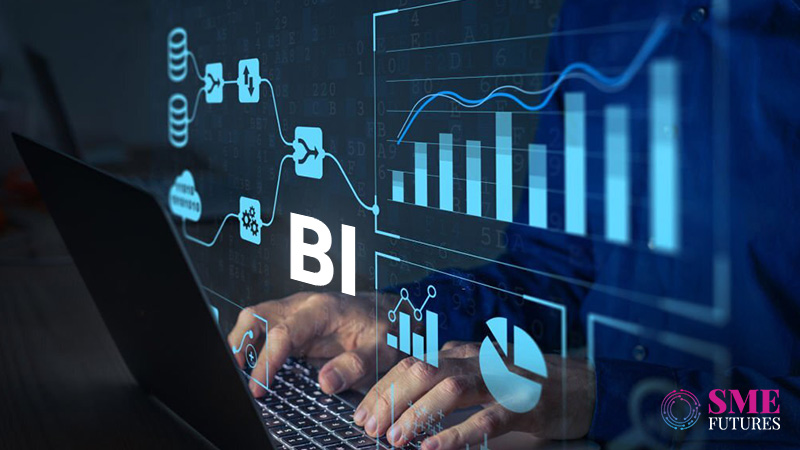With IoT adoption growing rapidly, uninterrupted intelligence tops the list of new trends in Big Data analytics. In a recent white paper, ABI Research predicted that we’ll soon see greater adoption of continuous intelligence technologies as streaming analytics and the demand for real-time insights will start gaining more traction.
Business Intelligence – The DNA of tomorrow
Business intelligence (BI) combines business analytics, data mining, data visualisation, data tools and infrastructure, and best practices to help organisations to make more data-driven decisions. Data analytics entails combing through massive datasets to uncover patterns and trends, draw conclusions about hypotheses, and use data-driven insights to support business decisions. Using these best practices, organisations can make impactful decisions and develop effective strategies.
One of the most significant benefits of BI is its ability to help businesses understand their customers’ needs and how to best meet them. This is a considerable advantage in an economy where customer experience is critical to a company’s success. By utilizing predictive analytics, BI can also assist in organizations’ cash flow
BI- Game Changer for MSME
Business intelligence (BI) has pushed analytics to the center of many small and midsize organizations’ priorities. Analytics is no longer restricted to large corporations with vast pockets.
It’s now commonly recognized, with most respondents stating that analytics allows them to make better-informed decisions. As a result, the relationships with customers and business partners also have improved significantly. Several sectors have adopted data analytics, such as the travel and hospitality industry, where turnarounds can be quick.
In India, the majority of the people live in rural areas and work in small companies. These Micro, Small, and Medium-Scale Enterprises (MSME) have helped India’s GDP growth and helped people climb out of poverty. Rapid changes have happened due to big data, which has radically altered the way decisions are made, and policies are implemented at both the micro and macro levels of the Indian economy.
Further adoption of technologies, like analytics, automation, and artificial intelligence (AI), can benefit the Indian economy. Understanding that BI enables data to be consumed across departments quickly and easily allows departments to complete tasks more effectively and efficiently.
Data visualization is now accessible has also aided in BI acceptance. The human brain is visually wired, with images accounting for 90% of the information sent to the brain. Business leaders can easily see patterns, trends, and correlations in data sets, which might otherwise go undiscovered.
The ability to show data in various forms, such as pie charts, area maps, bar graphs, gauge charts, and so on, makes the information more appealing and instructive. The information obtained through various corporate dashboards aids top executives and throws a spotlight on actions that may be required.
The no-code and self-service BI are becoming the game changers now. With these features being deployed, the complete potential of data can be harnessed by everyone in an organization. Employees can look for the solutions for their queries in natural language and get insights instantly. It has helped many organizations to rely on data entirely as it is helping to get the work faster and make better decisions based on data.
As per Gartner 2020 CIO Agenda Survey, by the end of 2024, 75% of companies will have moved away from pilot programs and tests and into fully operationalized Big Data strategies.
This change is anticipated to enhance streaming data and analytics infrastructures by 500%. Businesses are increasingly turning to AI, machine learning, and natural language processing to help them swiftly uncover and act on insights hidden in fragmented datasets as more data sources enter the mix every day.
Hopefully, with the end of the COVID-19 pandemic, helping companies avoid future crises will be the next thing in Big Data analytics. As a result, the growth of platforms that will assess risks, economic conditions, and climate trends and model different responses to black swan events is likely to increase.











